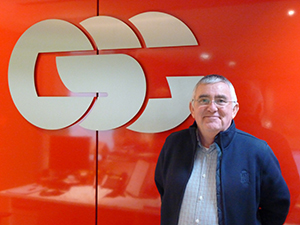Safe Processes
30 May 2019 by csg_web_admin

As you probably know, we take our Health & Safety responsibilities very safely, here at CSG. In April 2018, we held our inaugural ‘Health & Safety Week’, an initiative we repeated this year. As part of our developing focus, we’ve decided to turn this very broad topic into four more clearly defined categories: Safe Processes, Safe Equipment, Safe Environment and Safe People. Continuing the series, we’ll investigate what is covered by the Safe Processes element of our policy.
Safe Processes
If you were asked to give a single word that defines our age, you might be tempted to suggest a some technological term, perhaps a word not old enough to be listed in the yellowed pages of a fifty year-old dictionary, like ’internet’ or ‘micro-chip’. It would be a good answer – understandable but perhaps not quite defining enough.
Ask anyone who’s done a similar job of work over the last four decades and they’ll probably agree the biggest difference between today’s world and the one in which they started in the job is the infinitely greater importance placed upon Process.
We live in an increasingly process-driven world. Tasks that, years ago, were often left to the operator to be performed in the most obvious or intuitive way are now invariably the subject of a multi-page document, outlining in forensic detail the parameters of each stage. Yes, digital technology has influenced our lives greatly but perhaps the greatest effect, even now, is the way
that so many of our ‘analogue’ tasks can also be broken down into prescriptive lines of instruction, just like a computer program.
Frustrating as it can sometimes be to accept that our lives are more mapped out than they have ever been, it’s not necessarily a bad thing. In hazardous industries such as our own, it’s long been understood that you can’t compromise safety by performing a certain task in whatever way you happen to prefer. When the stakes are high, there has to be a certainty that safety is assured at all times – and that means ensuring the process is pre-determined, often to the most minor detail.
Of course, the stakes don’t get much higher than ensuring the safety of hundreds of employees and many, many more visitors, contractors, customers and neighbours and it’s the responsibility of Kevin Mooney, our Health & Safety Manager, to ensure that our processes get the job done in the safest way, every time.
In one form or another, we’ve been adopting ever-safer processes in the ways that we work for decades. Responding to the ever-shifting balance between the services we are able to offer and the way we expect our colleagues to perform them has become a process in itself.
Today, Kevin and our Compliance Manager, Sarah Taylor and their teams are continuing to evolve the way we control our processes, to ensure the very best combination of operational excellence and safe practice. Like any form of evolution, the task will never be finished; there’ll always be some characteristic that requires an adaptation to ensure greater success in future.
This year’s focus is on those we’ve always been less able to control: contractors. Whether they’re working with CSG to look after our facilities or they’re sub-contractors doing work on our behalf for the customer, we’re now ensuring we can exert the same levels of control over their processes.This will allow us to expect the same level of safe practice already shown by our own highly compliant team.
“We’ve created an ‘Approved Contractor’ list”, explains Kevin. “It’s a means for us to ensure we know the capabilities of each of the external companies we use: their accreditations, the standards they can meet, even the renewal dates of their insurance”
“Having contacted each of our contractors and obtained all that information, we’ll then make it available to our Operational teams and give them the ability to update it continuously.”
Such visibility of our partners is regarded as ‘best practice’ in other industries and it ensures that all processes carried out on CSG’s behalf, can be seen to adhere to our own internal Health & Safety standards. Isn’t it all a bit onerous, adding another layer of bureaucracy to a dynamic commercial environment? You sense that Kevin has already anticipated the question:
“Simplicity has to be the guiding principle here. We know that there can’t be any encumbrance on operations because our policies need to be applied one hundred percent of the time. The moment there’s a complication, there’s a temptation not to comply so the whole thing needs to be kept as simple as possible.”
What about smaller, trusted contractors? Doesn’t it penalise them to give them greater expectations to meet?
“We’ve always recognised the need to avoid being over-zealous and creating rules for the sake of having rules but on certain issues, like accreditations, we mustn’t compromise. Of course, we’re willing to give assistance to any contractor trying to obtain the standards we’re asking of them. If they can comply, we’ll still want to work with them so it would be in both our interests to help where we can.”
It’s another way to ensure that our processes are as safe as they can be and to ensure that the often necessary practice of contracting out work doesn’t create a reason for our internal safety standards to be upheld any less, whoever it is that’s performing the task.
Once the ‘Approved Contractor’ list is established in CSG’s way of working, there’s an intention to develop it further, to extend the principle to greater levels of safety assurance. You might say that the very process of ensuring safe working processes goes on.
